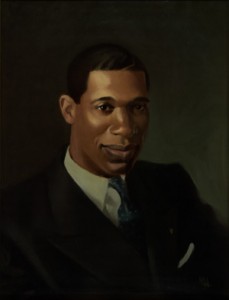Michael J. Klarman introduces the case Missouri ex rel. Gaines v. Canada (1938) in his book From Jim Crow to Civil Rights (Oxford 2004). Klarman addresses this particular case in his section about the Interwar Period. He used this case for one of the examples involving segregation in in-state higher education. Klarman continues to discuss the case in his chapter on the World War II Era. Interracial higher education continued to be an issue for quite some time in America, especially in the south. The issue came to a climax sixteen years later with the Supreme Court decision of Brown v. Board of Education in 1954. Gaines v. Canada is one of the first cases on the topic of educational segregation to make it to the Supreme Court.
Segregation in education was a hot topic of interest during this period. The United States seemed split in their opinion about it. This particular case begins with the University of Missouri refusing to admit Lloyd L. Gaines, a resident of Missouri, to its Law school. The school refusal accounted for the fact that Missouri had a “separate education for the races” in its constitution at the time. Missouri, in an attempt to brush the case under the rug, agreed to pay Gaines’ tuition at either of their neighboring law schools in Iowa, Kansas or Nebraska, as there was no law school specifically designed for blacks in Missouri at the time. Gaines could have gone to the other schools, but he fought hard to go the law school at Missouri. After having received this dismissal, Gaines sought the assistance of the National Association for the Advancement of Colored People (NAACP). With the NAACP, Gaines pursued legal action against the University of Missouri on account of their admissions guidelines. The NAACP and Gaines took the case all the way to the Supreme Court in 1938. Gaines argued that the admissions refusal was a violation of the equal protection clause of the Fourteenth Amendment.
When taken to the Washington, the Supreme Court ruled in favor of Gaines. Chief Justice Huges wrote in his opinion that the Court had ruled that if that state provided legal education to one of the races, it must provide it to all races. They finally ruled, in Justice James McReynold’s Separate Opinion that the University of Missouri could definitely not still refuse Gaines’ admission to the law school.
The quizzical piece of this tale remains that once Gaines was victorious in his pursuit of law school education at the University of Missouri, he completely disappeared three months later at the age of 28. He was last seen in Chicago in March of 1938, but was never seen or heard from again.
Klarman writes that the main issue of Gaines was that it “invalidated out-of-state tuition grants for blacks to pursue graduate and professional education.” He also writes that it had a “greater affect on legislatures than most civil rights victories thus far considered.” Klarman finds that many states go directly against what the Court had ruled unconstitutional (Klarman 160). The higher education schools had to either integrate or provide “equal but separate facilities.” In particular, Missouri’s response to the case was that they built a law school for blacks, though it was far inferior to that of the regular law school (Klarman 161). One key point that Klarman remarks on is that it wasn’t until “after World War II that most southern states begin providing (segregated) higher education opportunities for blacks within their boarders.” Gaines clearly helped this situation along, but not in the radical way one might think. Some critics may believe that the Gaines case paved the way for Plessy v. Ferguson in 1954. Though it may have begun to break down the barriers of “separate but equal.” Though it marks the first time the issue had been taken to higher court, not many significant changes followed after its decision.
Later in his narrative, in the section on the WWII Era, Klarman relates that even after ten years, not one southern state had admitted blacks to a Ph.D. program (Klarman 204).
Many critics and authors have defined the Gaines case as the predecessor of Brown v. Board of Education. For example, Daniel T. Kelleher writes in his article “The Case of Lloyd Lioonel Gaines: The Demise of the Separate but Equal Doctrine,” that the case was the beginning of the end for the “separate but equal” policy in the United States. He is convinced that it paved the way for a new doctrine in the country. He writes that the decision “provided the legal basis for the desegregation of professional and graduate facilities in several boarder and southwestern states after World War II” (Kelleher 271).
Another author is Larry Grothaus, who wrote the article ““The Inevitable Mr. Gaines”: The Long Struggle to Desegregate the University of Missouri 1936-1950.” In his article, he provides an extensive foundation for the background information of the Gaines case. He also asserts that the case was the strong predecessor to the Brown case sixteen years later. Most critics agree this to be the situation.
From a fairly extensive amount of research, it is found that Klarman is one of the few critics of this case that has a seemingly negative attitude towards its outcome. Though the court ruled in favor of Gaines, his disappearance made it difficult for the NAACP to continue on with their pursuit of destroying the “separate but equal” doctrine. Klarman rightfully points out that many states went directly against the courts ruling. Though it has been called, many times, the predecessor of Brown v. Board of Education, the case of Gaines v. Canada is just the first step in a long and dreary process for higher education desegregation. Not much legislation seems to follow this immediate case. However, its success is greatly remembered in Supreme Court history.


